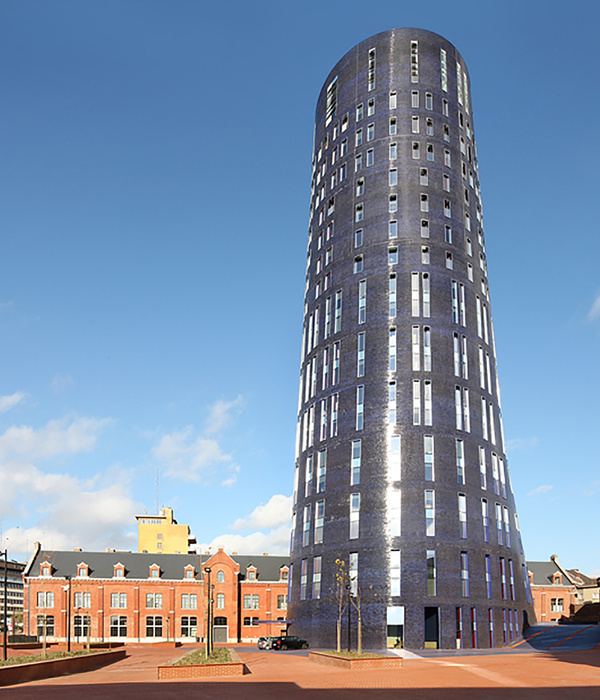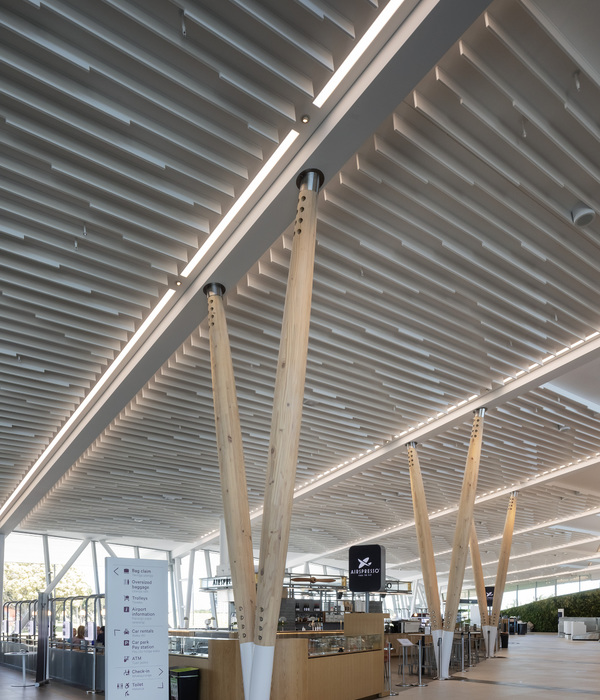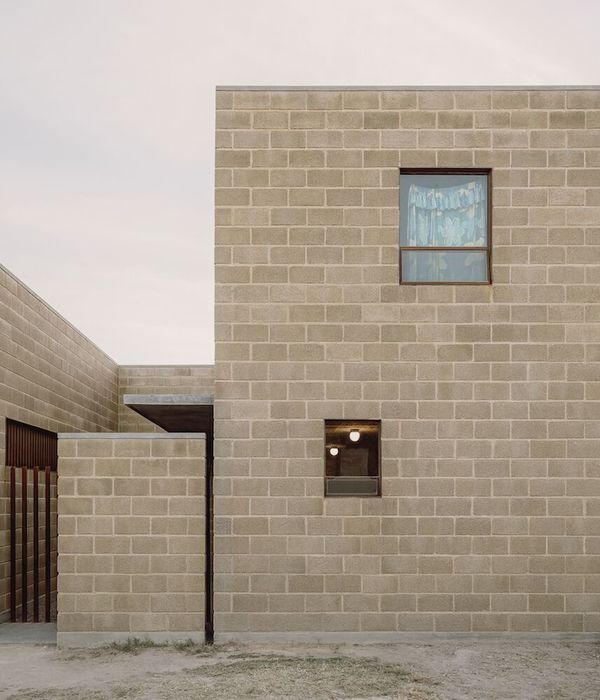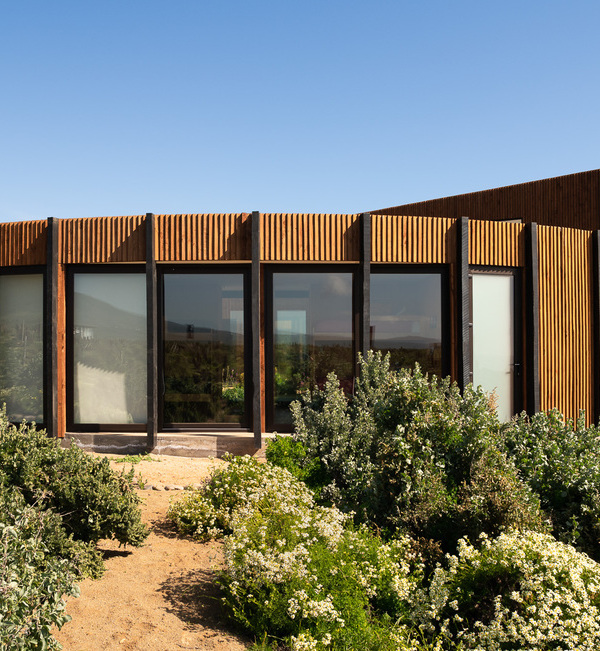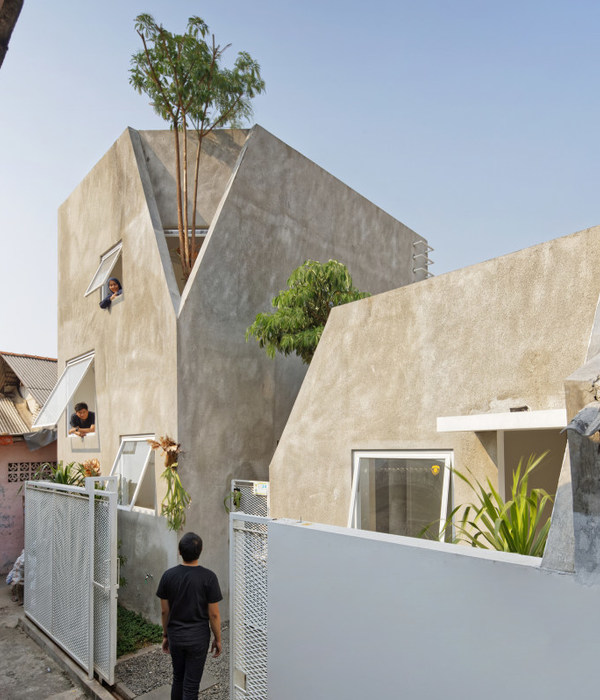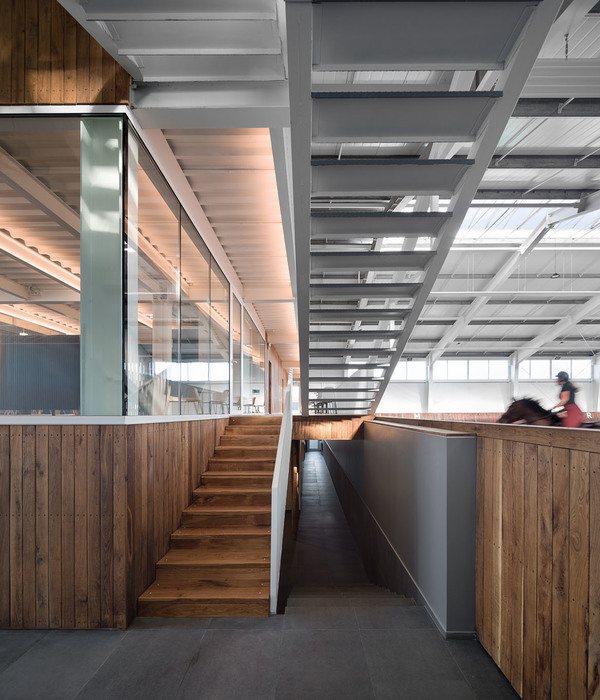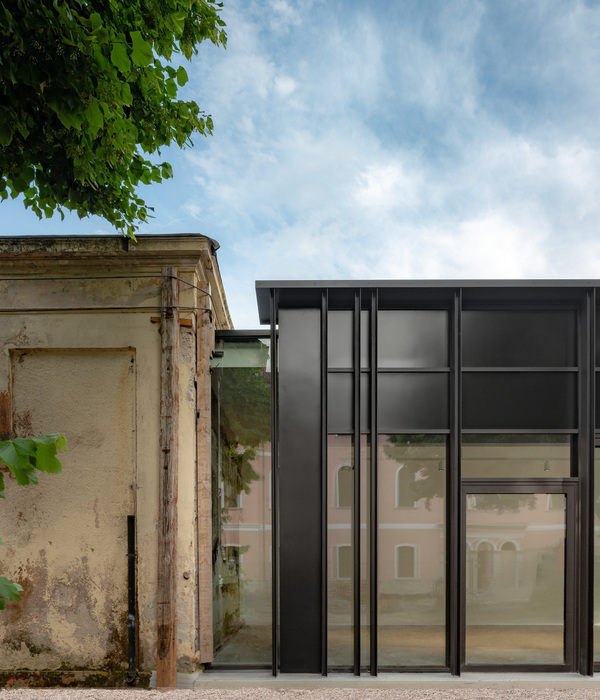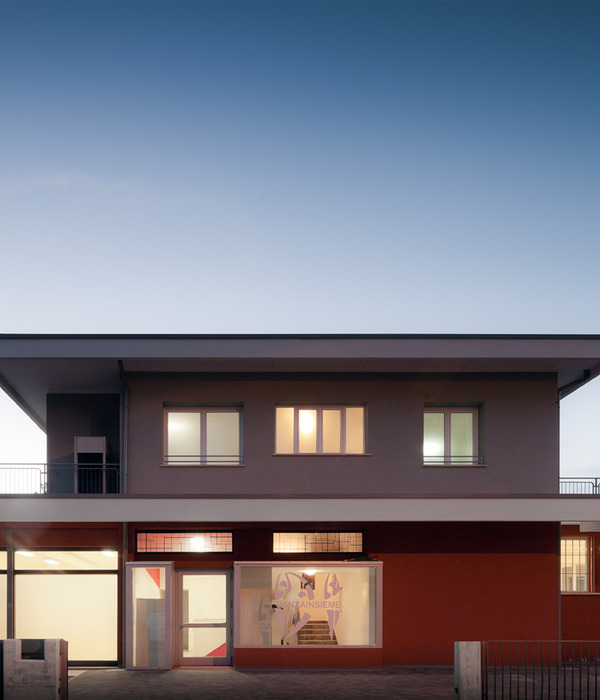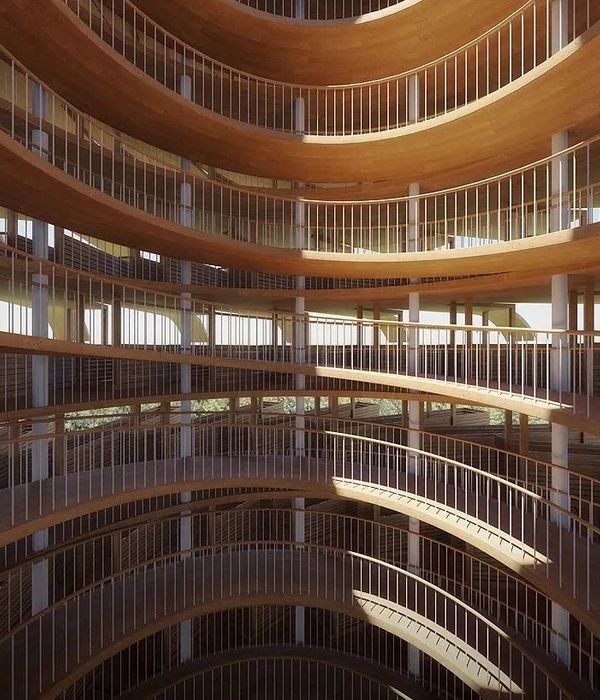- 项目名称:李子沟村的红砖自然礼堂
- 设计方:KEYWORKS+礽建筑
- 公司网站:www.hellokeyworks.com,www.rengarch.com
- 联系邮箱:KEYWORKS:keyworks@qq.com,礽建筑:office@rengarch.com
- 主创:Key Wang+章礽然
- 团队:张小杏,赖尔逊,施新桐,刘欣鹏
- 项目地址:中国河南省洛阳市新安县磁涧镇李子沟村4号
- 建筑面积:1241㎡
- 摄影版权:孙伟川 leo sun
- 合作方:范学宜 高孝午 张琳
- 客户:洛阳树鑫农业科技有限公司
- 品牌:河南巨兴建材有限公司,页岩烧结砖,洛阳北玻集团,Low-e双钢化玻璃,中国铝业恒美铝材,铝型材
于中国河南省洛阳市的李子沟村,建筑师Key Wang(KEYWORKS)+章礽然(礽建筑)联合设计了一个红砖自然礼堂,为当地塑造一个富有仪式感的公共场所。
The architects Key Wang (KEYWORKS) + Rengran Zhang (RENGARCH) designed a Ceremonial Hall Building in the rural countryside near Luoyang in Henan province in China. An ensemble of buildings and public spaces, which consists of a ceremonial hall, spaces for contemplation, living and farming, shaping a new community place for visitors and villagers alike.
▼项目外观,external view of the project ©孙伟川
项目开始于2017年,一对成长于当地且富有乡土情怀的夫妻邀请我们到访他们的家乡。伴随设计的过程,我们用了几个月时间住在当地,这个过程给予了进入当地生活的重要视野。超过三年的调研、设计和建设,我们逐步认识了伴随四季变化的乡村生活。
The project started in 2017, when a local couple invited us to visit their hometown. As part of the design process we lived several months on the countryside like villagers. This brought us important insights into the local lifestyle. Over three years of research, design and construction,we experienced rural life though all seasons and became accepted friends of the village.
▼基地原貌,original view of the site ©KEYWORKS+礽建筑
项目的挑战来自于保留当地传统的同时给村民和到访者带来新的价值,建设一个共同的基础以此促进当地可持续的生态环境发展。通过设计,我们希望为乡村提升社区、经济和文化的价值。
We see our challenge in preserving domestic knowledge and traditions with a new function for the villagers and future visitors. Building a new common ground, can increase a return of young people, hope for villagers and even, new perspectives for a sustainable future. Learning from each other with respecting the past and the present of this place – the genius loci.The goal to regenerate rural countryside with a building, which connects social, economic and cultural needs while respecting the memory of a place, could become a way to rethink the future of villages.
▼分析图,analysis ©KEYWORKS+礽建筑
我们的愿景是为当地设计一个新建筑,并在这个建筑中纪念早期的农业文明—从许愿到仪式天地,表达对天地的感恩。与此同时,完成一个关于时间的精神场所。
Our design vision is to create a new type of building for this region and reconnect the tradition of agriculture – like worshipping heaven and earth – and celebrate moments of life in a hall for ceremonial activities. A new space for everyone to preserve and create new memories towards a future rural-urban community with sensitivity for time, nature and local culture.
▼项目南侧外观,富有仪式感,southern facade of the project with a feeling of ceremony ©孙伟川
▼乡间小道连接建筑,台阶弥补场地高差,village path connecting to the building, stairs eliminate the height difference on the site ©孙伟川
通过对场地周边大量的调研,我们发现了当地早期民居—土窑,以及后期以拱券形式为单位的红砖民居。我们将这种形式看为当地具有情感记忆的建筑语言,并将它延用到当代的空间形式与功能中,尝试去发掘新的表现可能性。除了仪式厅以外,还有自然礼堂配套建筑为了到访者与村民居住、阅读、学习、休憩、绘画、务农、做饭,沉浸于此去体验当地生活。
Through numerous dialogues and research in the neighborhood area, we found a common archetype of house – the earth cave house in the form of an arch. The later forms combine houses with red brick elements with more arches. We continue the common language of arches and red bricks combined with new functions and new spacial dimensions. Beside the ceremonial hall, there is a living space for living, studying and farming for visitors and villagers. Together they can explore and communicate a lifestyle with space for contemplation and healthy conscious living.
▼项目西侧外观,western facade of the project ©孙伟川
▼农田,砖道与红砖建筑,farmland, brick path and building composed of red bricks ©孙伟川
在山峦与水塘之间,村庄小道旁,红砖围墙标记了通往圆筒型转角建筑的小路,为我们打开了一个入口广场。
Meandering like a ribbon, a red brick wall leads the visitor from the street to a round corner building which marks the entrance to a place, lined with straight walls that opens towards the south in a representative gesture.
▼入口广场,entrance plaza ©孙伟川
参观者进入到五个砖拱的门廊和圆筒型建筑的组合。圆形屋顶以清晰的形式结构驾于插入的空间之上。仪式厅的外部弧墙插入被圆形屋顶界定的内部,软化了空间的正反关系,这种关系逐步将参观者带向了开阔的田园入口。
The visitors approach the ceremonial hall building through a corridor enclosed by five arches. The corridor leads to a yard formed by an arrangement of different directions. The building keeps single walls and roofs which are placed to create framed views within the yard. Each view was chosen carefully by the architects to make the visit a sensual experience. Inside – Outside, Nature, Light and Shadow and transparency were the key questions during the design process.
▼砖拱门廊与圆筒形建筑组合,combination of corridor with brick arches and cylinder-shaped building ©孙伟川
▼带有砖拱门洞的走廊,corridor with brick arches ©孙伟川
▼走廊后部连接仪式厅,ceremony hall at the back of the corridor ©孙伟川
半圆形的仪式厅位于门廊的背面,是自然礼堂中感受礼仪的场所。开放的屋顶和钢梁结构给予了光影表演的舞台,光线通过钢梁形成的阴影映在墙体与地面上,伴随时间的变化呈现出不同角度的明暗效果。在这里,阴影像钟表的指针表达了时间的流转。西边弧墙中心的开口面向田园,与中间的长条砖垛呈中线对应,固定了风景的主视觉,增加风景纵深感的同时,让参观者停留于内部与外部空间的对话。
The semi circular shaped ceremonial hall is an enclosed space with a totally open roof and an opening in the wall. While the opening frames the surrounding nature, the beam structure of the roof creates a play of shadow and light. The beams remind us of a solar clockwork and shall intensify the visitors perception of time.
▼仪式厅,屋顶开放,钢梁结构带来变化的光影,ceremony hall with open roof, steel beams creating varying light and shadows ©孙伟川
▼仪式厅一侧的天井院和办公区,yard and office at one side of the ceremony hall ©孙伟川
自然礼堂配套建筑位于仪式厅的南边,过渡了南北方向地形的高差:在北边,和仪式厅保持相似高度,在南边,建筑以一层高度向田园打开。建筑保持红色砖墙的水平感,转角的部分以弧线墙体过渡。配套建筑的正面有十二个砖拱面向南方,每个砖拱对应不同的功能:露天休憩空间、厨房、餐室、茶室、阅读室、画室、书房、打坐室、亲子活动室、卧室、卫生间以及库房。
The facility building is located south of the site. The long rectangular building with rounded corners and 12 arches as a prominent facade element that open towards the south view, offers spaces for reflecting, cooking, dining, tea ceremonies, reading, painting, reading, meditating, family activity, sleeping, bathroom and storage space.
▼南侧礼堂配套,facility building on the southern side ©孙伟川
▼休憩室,recreation space ©孙伟川
▼不同功能的房间,room with different functions ©孙伟川
▼居民在建筑中的活动,activities of the local residents in the building ©孙伟川
▼夜景,night view ©孙伟川
▼总平面图,site plan ©KEYWORKS+礽建筑
▼平面图,floor plan ©KEYWORKS+礽建筑
▼立面图和剖面图,elevations and sections ©KEYWORKS+礽建筑
{{item.text_origin}}

